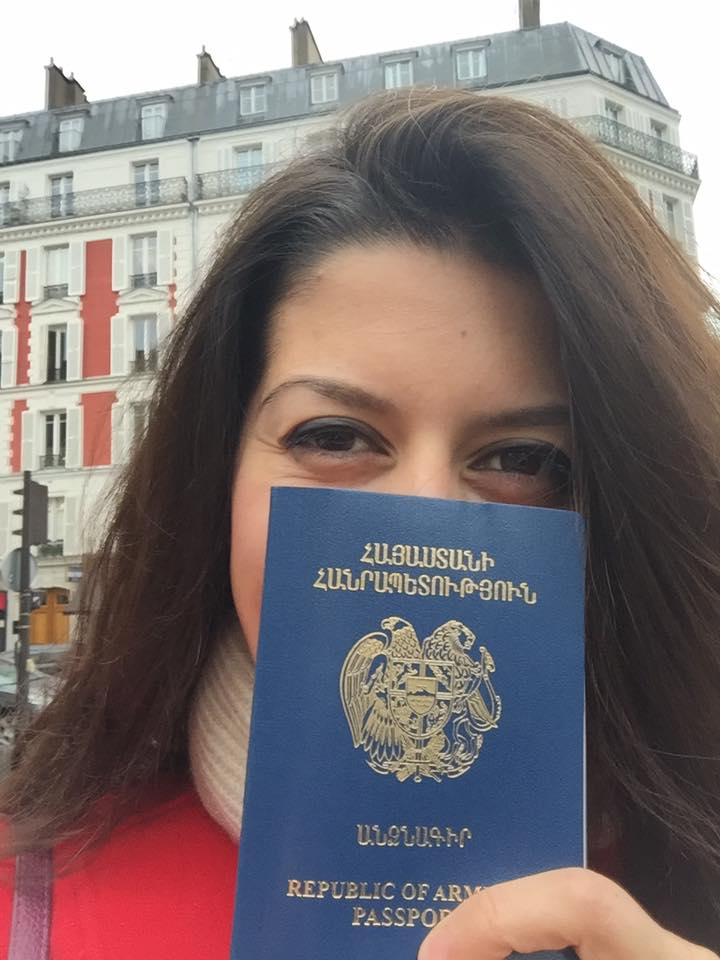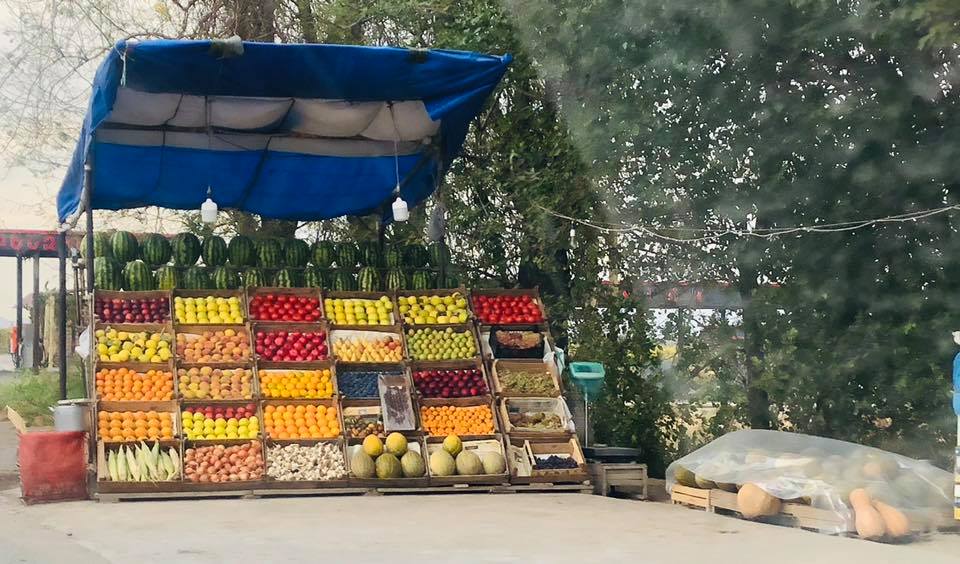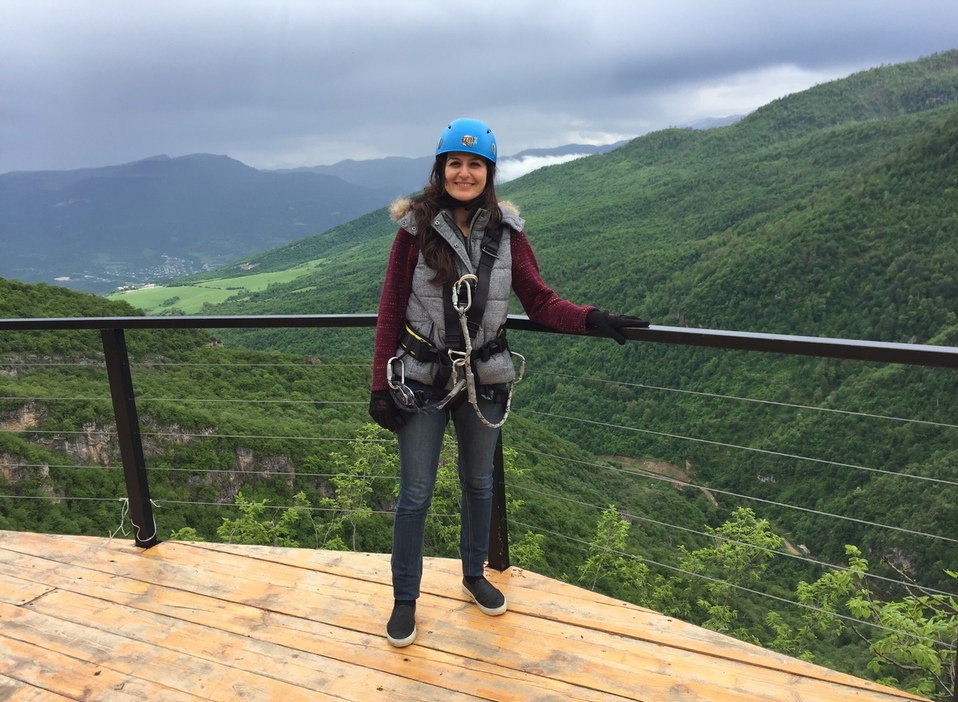My Impact
19.04.2019
Business
Tatevik Khatchikian - The Founder of Blooming Armenia
-webp(85)-o(jpg).webp?token=0cae088f29bc312bdd709d56c4a6aafc)
Tatevik Khatchikian is the founder of “Blooming Armenia,” a project that aims to develop Armenia’s villages.
''Armenia didn’t start in Yerevan and it doesn’t end with it!''
-Tatevik, please tell us a bit about yourself and your ties to Armenia
After the genocide, my grandfather and his family moved to France, where he worked as a medical physician in the French Army. At the end of the 1940s, there was a wave of repatriation to the USSR, and my grandfather decided to return to Armenia with his family. I can rightfully call myself the granddaughter of a repatriate! In the 90s, our family, like many of our fellow countrymen, was faced with great difficulties and since my grandfather had French citizenship, we made the decision to emigrate.
I got my education in Paris, and began working in the finance and consulting field, and after I began working in London at Ruben Vardanyan’s foundation, where I took part in the development of the humanitarian initiative “Aurora Prize”. The one and a half years I spent working at the foundation got me a lot closer with Armenia. I always wanted to maintain a close tie with my homeland and contribute to its development and prosperity. The “Repat Start-Up Mentorship” program helped me make a decision on this.
''Armenia didn’t start in Yerevan and it doesn’t end with it!''
-Tatevik, please tell us a bit about yourself and your ties to Armenia
After the genocide, my grandfather and his family moved to France, where he worked as a medical physician in the French Army. At the end of the 1940s, there was a wave of repatriation to the USSR, and my grandfather decided to return to Armenia with his family. I can rightfully call myself the granddaughter of a repatriate! In the 90s, our family, like many of our fellow countrymen, was faced with great difficulties and since my grandfather had French citizenship, we made the decision to emigrate.
I got my education in Paris, and began working in the finance and consulting field, and after I began working in London at Ruben Vardanyan’s foundation, where I took part in the development of the humanitarian initiative “Aurora Prize”. The one and a half years I spent working at the foundation got me a lot closer with Armenia. I always wanted to maintain a close tie with my homeland and contribute to its development and prosperity. The “Repat Start-Up Mentorship” program helped me make a decision on this.

-What is the main idea behind “Blooming Armenia”? Why did you choose this specifically?
Seeing the state of Armenian villages, I began to think about how to develop them, and not just aesthetically (by only making them cleaner and prettier), but also by addressing deeper and more difficult problems.
“Blooming Armenia” is a project with the aim of developing villages by organising a national contest to select the most bloomed villages of Armenia. The winning villages will be awarded: they will get a label, but also the funding of a development project having a direct and positive impact on the village.
The model for the idea comes from France, where a close idea has been in effect for decades. The fact of the matter is that after World War II, the villages of France were left in a disastrous state. In the 50’s they decided to carry out a competition for the most blossomed, clean, and well-maintained village. Over time, this competition grew into an effective way of developing rural areas. Today the contest attracts about 10,000 participating villages annually. The rating system for the villages was by the number of flowers it received (similar to how restaurants receive “stars”). This became the primary criteria for both local and foreign tourists interested in atypical tourist activities. As I see it, Armenian villages have enormous potential and such a system could help realize it.
-Could you tell us about the implementation of “Blooming Armenia”? What stage is the project at currently?
The program we have developed consists of 2 different stages. The first is the contest between blooming villages. The second one is the implementation of development projects in the winning villages.
Our team visited 15 villages in Armenia and selected five pilot villages that met our criteria. They are located in different regions, or marzes, of the country (Shirak, Vayots Dzor, Lori, and Kotayk) and, in our opinion, have great potential for development.
We invited a landscape design expert from France to each of the villages, who got familiar with the terrain and created development models for improvement in several different areas. This could apply to the central street of the village, a schoolyard, or a park. At the moment, we are awaiting for the finalized versions of the layouts from the designer, after which specific action plans will be developed for each village. Around March or April, we will actively begin working with the villages on the execution of the plans. During the course of this, we hope to strengthen ties with the locals in order to better understand the potential of each village and create a specific business plan for its development.
By the end of the year, we will get an independent jury to look over the results of the competition. They will not only look at how much the villages “blossomed” but also look over the process, taking into account the interaction with locals, their participation, initiative, as well as the potential of the village. We will pay very close attention to the latter parts of the criteria, as this is the key for the second stage of the program. The winning villages and the prize winners will receive funding for implementing the project in one of the 3 areas: ecotourism, agrobusiness and environment.
I think that our program will help create a balance between creating an attractive village while helping solve their socio-economic issues.

-How did the locals react to the idea of “Blooming Armenia”? Have you encountered any problems in cooperating with them?
In most of the villages, the locals were approving and supportive. There is eager help from school children, the youth, active women, and a lot of the support comes from the chairmen of the villages. It is these people that will be the main component of this transformation; they genuinely love their villages and do not want to leave them and they are willing to spend their time and energy to improve the environment around them.
Local NGOs have also shown interest in cooperating with us. It was nice to be introduced to their work in the development of the villages. These organizations may not have a clear mission, goal, or action plan, but the people working in them are united and we do hope to help them.
Of course, there were some challenges as well, the main one being to gain the locals’ confidence. Since our program is new, many may not understand its meaning or the logic behind it. Besides that, the mentality of some local residents attracts attention since not all of them are prepared to change their habitual way of life. We’re trying to show them that there is a different way to relate to ourselves, to people around us, and to nature. This doesn’t immediately save them from their problems, but it takes a small step towards solving them. It’s difficult to talk about business with someone who is too lazy to properly dispose of their garbage or to clean their front yard. We first want to convey the message of caring for the environment to the people to ensure a final result.
Luckily, most people in our chosen villages are more accepting of such changes and understand their importance!
-What other social issues can “Blooming Armenia” address?
I hope that our project will improve the overall quality of life in these villages and lay foundations for the locals to change their mentality. Another huge problem is the depopulation of these villages, as more and more people leave for major cities or leave the country altogether. We will do everything we can to reduce this emigration and help keep people in their villages. The financing we offer to business projects will help with social and economic development and create new jobs.
Besides, Armenia didn’t start with Yerevan and it doesn’t end there! Most villages remain unknown; not just for tourists but for fellow Armenians, they have no status. We want to bring these villages out of their anonymity. If current trends continue, major Armenian cities will soon approach European standards. But tourists today look for authentic, original, and atypical sceneries and journeys. Only one of our five chosen villages is located near Yerevan, the rest are “lost” on the map of Armenia. It was interesting to find that the further we got from major cities, the more willing the locals were to participate in the project.

In most of the villages, the locals were approving and supportive. There is eager help from school children, the youth, active women, and a lot of the support comes from the chairmen of the villages. It is these people that will be the main component of this transformation; they genuinely love their villages and do not want to leave them and they are willing to spend their time and energy to improve the environment around them.
Local NGOs have also shown interest in cooperating with us. It was nice to be introduced to their work in the development of the villages. These organizations may not have a clear mission, goal, or action plan, but the people working in them are united and we do hope to help them.
Of course, there were some challenges as well, the main one being to gain the locals’ confidence. Since our program is new, many may not understand its meaning or the logic behind it. Besides that, the mentality of some local residents attracts attention since not all of them are prepared to change their habitual way of life. We’re trying to show them that there is a different way to relate to ourselves, to people around us, and to nature. This doesn’t immediately save them from their problems, but it takes a small step towards solving them. It’s difficult to talk about business with someone who is too lazy to properly dispose of their garbage or to clean their front yard. We first want to convey the message of caring for the environment to the people to ensure a final result.
Luckily, most people in our chosen villages are more accepting of such changes and understand their importance!
-What other social issues can “Blooming Armenia” address?
I hope that our project will improve the overall quality of life in these villages and lay foundations for the locals to change their mentality. Another huge problem is the depopulation of these villages, as more and more people leave for major cities or leave the country altogether. We will do everything we can to reduce this emigration and help keep people in their villages. The financing we offer to business projects will help with social and economic development and create new jobs.
Besides, Armenia didn’t start with Yerevan and it doesn’t end there! Most villages remain unknown; not just for tourists but for fellow Armenians, they have no status. We want to bring these villages out of their anonymity. If current trends continue, major Armenian cities will soon approach European standards. But tourists today look for authentic, original, and atypical sceneries and journeys. Only one of our five chosen villages is located near Yerevan, the rest are “lost” on the map of Armenia. It was interesting to find that the further we got from major cities, the more willing the locals were to participate in the project.

-What organizations are you working with within the frameworks of this project?
I’ve been very well acquainted with the Repat Armenia Foundation since I attended a presentation from them in Paris several years ago. As a participant in the Repat Start Up Mentorship program, I was able to develop my project, receive valuable input from professionals in various fields, and establish a network with many of them. Overall, it has been a very useful experience for me. Another valuable partner of ours has been the Armenia Tree Project, which help us immensely in areas such as gardening, landscaping, helping us choose plants and seeds, and planting and caring for everything.
And of course, our good friends at the Birthright Armenia volunteer program. We also cooperate with a variety of NGOs, and are looking for partners in France, and participate in competitions for grants. In general, organizations we interact with see that we do not have any grandiose global goals for profit or business expansion, so they tend to trust us. This year is a pilot for our project and it is very important. I hope that that all of our mistakes, successes, and achievements will help us create a self-reliant, independent, and effective mechanism.

I’ve been very well acquainted with the Repat Armenia Foundation since I attended a presentation from them in Paris several years ago. As a participant in the Repat Start Up Mentorship program, I was able to develop my project, receive valuable input from professionals in various fields, and establish a network with many of them. Overall, it has been a very useful experience for me. Another valuable partner of ours has been the Armenia Tree Project, which help us immensely in areas such as gardening, landscaping, helping us choose plants and seeds, and planting and caring for everything.
And of course, our good friends at the Birthright Armenia volunteer program. We also cooperate with a variety of NGOs, and are looking for partners in France, and participate in competitions for grants. In general, organizations we interact with see that we do not have any grandiose global goals for profit or business expansion, so they tend to trust us. This year is a pilot for our project and it is very important. I hope that that all of our mistakes, successes, and achievements will help us create a self-reliant, independent, and effective mechanism.

-Do you expect any support from government agencies?
I understand that the country is in transition right now and thus has much larger and more complex issues on its place. Of course, we are not against cooperation and we’d be pleased to see that our project gets attention and support on a state level. So far we are alone on our journey, but always ready for any dialogue.
-Has working on “Blooming Armenia” changed you personally in any way?
While working on the project, I came back to Armenia very often, nearly once every two months. I realized that the country is on a good track and there are many opportunities for its development. And there is hope that one day I, following in the footsteps of my grandfather, will return to my homeland. “Blooming Armenia” helps me move towards this.
Interview by Alisa Arakelyan
Translated by Vlad Babayan
I understand that the country is in transition right now and thus has much larger and more complex issues on its place. Of course, we are not against cooperation and we’d be pleased to see that our project gets attention and support on a state level. So far we are alone on our journey, but always ready for any dialogue.
-Has working on “Blooming Armenia” changed you personally in any way?
While working on the project, I came back to Armenia very often, nearly once every two months. I realized that the country is on a good track and there are many opportunities for its development. And there is hope that one day I, following in the footsteps of my grandfather, will return to my homeland. “Blooming Armenia” helps me move towards this.
Interview by Alisa Arakelyan
Translated by Vlad Babayan

-webp(85)-o(jpg).webp?token=99b4e91bb8cc1967465c3f6b761a71cc)
-webp(85)-o(jpg).webp?token=36be019b5372dc162cce9687b13d187a)
-webp(85)-o(jpg).webp?token=57218112855ed443678ae31de42f63ba)
-webp(85)-o(jpg).webp?token=6fb09ff3d6029bf8c945efb3e4835e63)